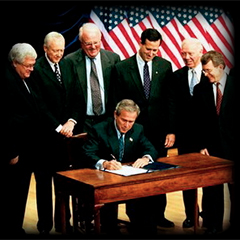NOTE: This article is one of a series on the “top ten” accomplishments of the pro-life movement over the past 40 years since unborn children were stripped of their legal right to life by the 1973 Roe v. Wade and Doe v. Bolton Supreme Court rulings.

It’s within the context of this “epic victory” for abortion advocates, as a recent Time magazine cover called it, that we must consider the impact of the pro-life laws that have been enacted since 1973.
The court left open the possibility that states may enact new restrictions on abortion, an opportunity that pro-life advocates across the country seized in an effort both to recover some of the immense ground lost through Roe and Doe, and to set in motion legal challenges that could one day overturn these rulings.
These restrictions are one of the main reasons that same Time magazine cover declared that despite the “epic victory” of Roe, abortion advocates have been “losing ever since.”
Pro-life laws save lives
Every state in the union has enacted some kind of restriction [PDF] on abortion, from parental involvement laws (38 states) to waiting periods (26 states) to conscience protections for health care workers (46 states).
Not only do these kinds of laws enjoy broad public support, they are saving babies from abortion.
One of the best studied examples of a life-saving abortion restriction is parental involvement laws that require a parent to consent to a minor’s abortion, or at least be informed about it. A study by Dr. Michael New found that enacting such a law reduces a state’s abortion rate by 13.6%. That translates into hundreds of thousands of lives saved.
New’s research finds that other pro-life laws also save lives, especially restrictions on government funding of abortion (more on that in our next installment).
Laws educate the public, frustrate abortionists
These kinds of laws aren’t just valuable for saving lives. Indeed some of them, like the federal ban on partial-birth abortion, may not save lives directly at all (other equally gruesome methods of killing babies late in pregnancy remain legal).
But these laws serve another important purpose: they educate the public about abortion.
The years-long battle to enact the federal ban on partial birth abortion is a great example. Every time the law was again debated in Congress was another opportunity to link the word “abortion” with horrifying descriptions of how abortionists actually kill children in the womb.
Every time an abortion restriction is proposed, we pro-lifers gain an opportunity to get abortion in the news and educate our fellow citizens, many of whom remain in the dark about the legacy of Roe v. Wade.
We also gain an opportunity to show how extreme the abortion industry is in their willingness to fight any and all restrictions—even local zoning laws.
Moreover, such measures demoralize the abortion industry. They recognize the enactment of legal restrictions on abortion, like the unprecedented
wave of pro-life legislation in the wake of the 2010 midterm elections, to be a sign of pro-life political strength.
Ultimate goal is to overturn Roe
It goes without saying that we cannot be content merely to restrict abortion more and more. Our ultimate goal must be to fully restore unborn children’s legal right to life.
In order to do that, we must first overturn the Supreme Court rulings that wiped out that right 40 years ago. And the likeliest way to do that is by way of tough state laws that tighten abortion restrictions and trigger legal challenges.
Roe v. Wade was nearly overturned in 1989 with the Supreme Court’s Webster v. Reproductive Health Services ruling, and again with Planned Parenthood v. Casey in 1992—cases in which the court reviewed statutes regulating abortion.
When the day comes that Roe v. Wade is finally overturned, that victory will be the legacy of the hundreds of pro-life laws enacted over the past 40 years through the tireless efforts of the pro-life movement.
